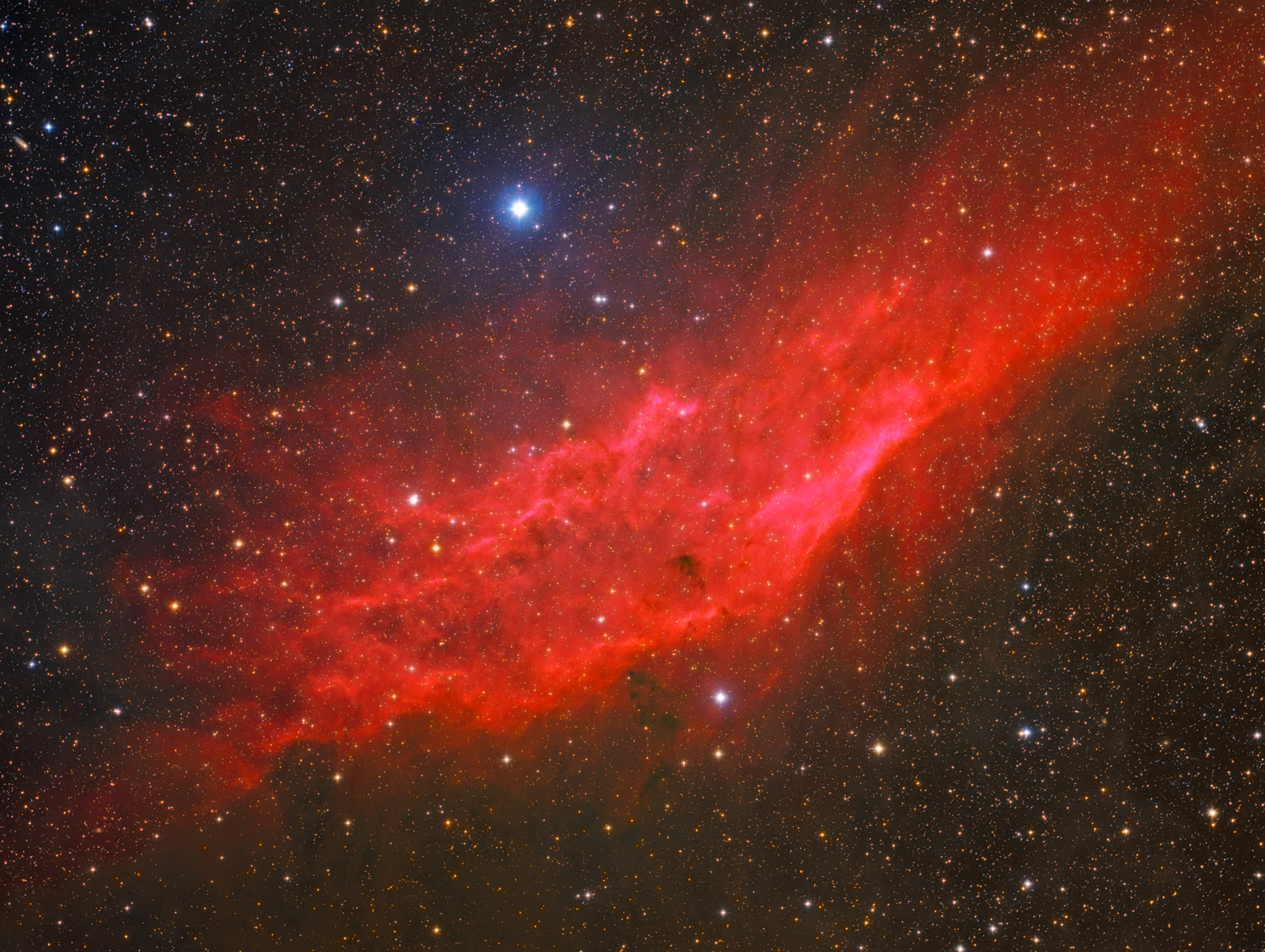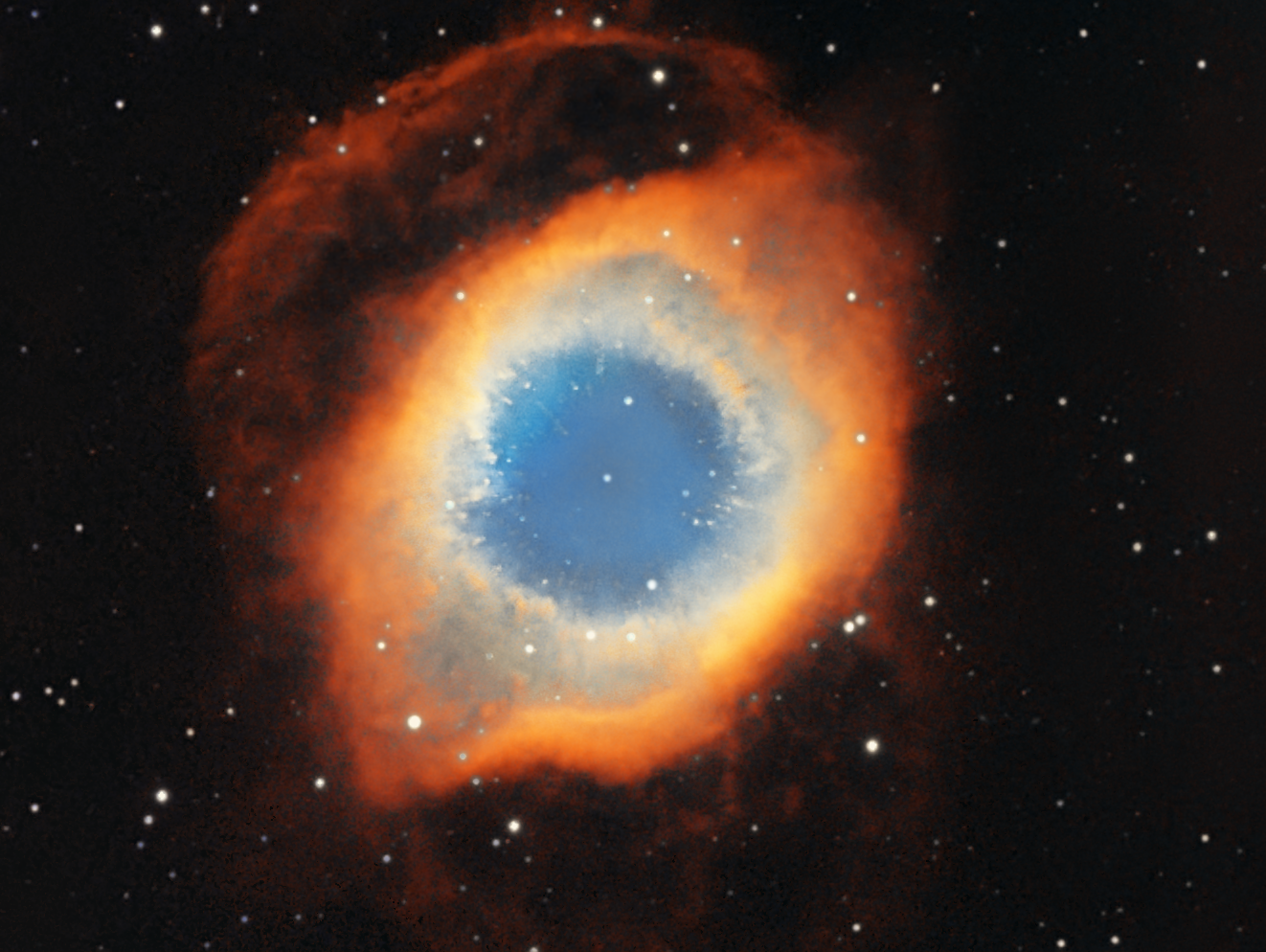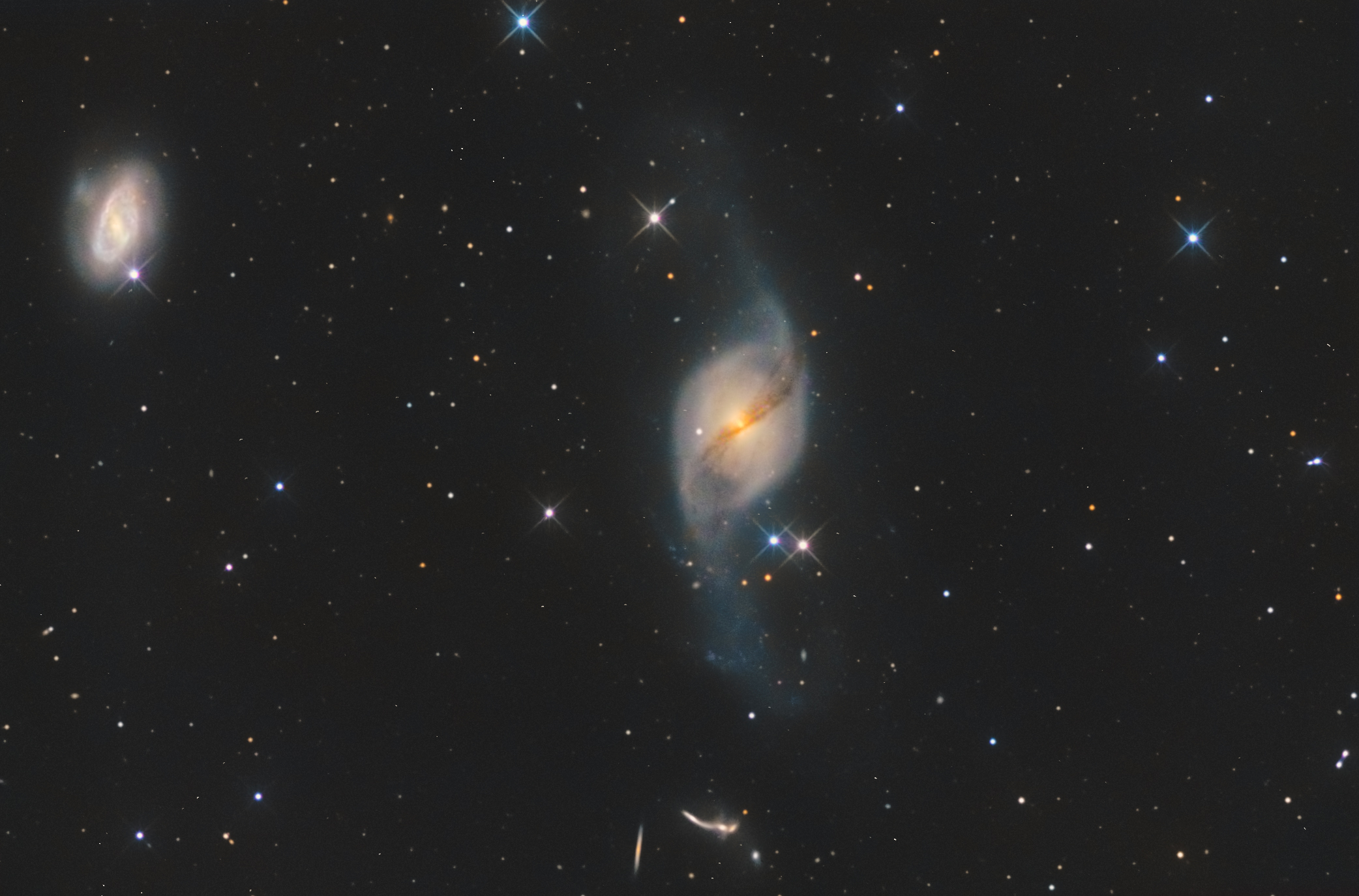Blog
The California Nebula (NGC 1499) is an emission nebula located in the constellation of Perseus. It is so named because it appears to resemble the outline of the US State ofCalifornia on long exposure photographs. It is almost 2.5° long on the sky and, because of its very low surface brightness, it is extremely difficult to observe visually. It lies at a distance of about 1,000 light years from Earth. The California Nebula was discovered by E. E. Barnard in 1884.
Telescope: Takahashi BabyQ 85
Mount: Skywatcher HEQ5 Pro
Camera: QSI 683 Momo
Filters: Astrodon Gen II, LRGB + Ha
Subexposures: 300sec bin1 Lum, 300sec bin2 Color + Ha
Total Exposure: 7h
Location: Mt. Parnon, Greece

John Henry Bonham (31 May 1948–25 September 1980) was an English musician and songwriter, best known as the drummer for the English rock band Led Zeppelin. Esteemed for his speed, power, fast bass drumming, distinctive sound, and feel for the groove,[1] he is regarded as one of the greatest and most influential rock drummers in history.
Bonham was born in 1948 in Redditch, Worcestershire and took up drums at the age of five, receiving a snare drum at the age of 10 and a full drum set at the age of 15. He played with multiple local bands both at school and following school, eventually playing in two different bands with future bandmate Robert Plant. Following the demise of the Yardbirds in 1968, Bonham joined Plant, guitarist Jimmy Page and bassist John Paul Jones to form Led Zeppelin. With the band, Bonham mostly showcased a hard-hitting hard rock style, but also handled funk and Latin-influenced grooves in later releases. Like Keith Moon of the Who, Bonham’s drum set grew in size following the band’s 1969 concert tours, including congas or timpanis and a gong. His drum solo, “Moby Dick“, was featured on the group’s second album and was a staple of their concerts, often lasting over 20 minutes. Outside of Led Zeppelin, Bonham played drums for other artists, including the Family Dogg, Screaming Lord Sutch, Lulu, Jimmy Stevens and Wings. Bonham played with Led Zeppelin until his death at the age of 32, in September 1980 following a day of heavy drinking. The surviving members disbanded the group out of respect for Bonham after his passing.
A mostly self-taught drummer, Bonham’s influences included Max Roach, Gene Krupa and Buddy Rich. Bonham was also close with Vanilla Fudgedrummer Carmine Appice, who introduced him to Ludwig drums. While primarily known for his hard rock style during his lifetime, Bonham’s reputation as a drummer has grown beyond hard rock following his death; he is now seen as one of the greatest drummers of all time. He has influenced numerous drummers, including Dave Grohl, Chad Smith, Dave Lombardo and Mike Portnoy. He was posthumously inducted into the Rock and Roll Hall of Fame in 1995 as a member of Led Zeppelin. In 2016, Rolling Stone ranked him first in its list of the “100 Greatest Drummers of All Time”
more...Louis Hayes (born May 31, 1937) is an American jazz drummer and band leader.
Louis Sedell Hayes was born to a father who played drums and piano. His mother played the piano. Hayes got his first drum set at age 10. He refers to the early influence of hearing jazz, especially big bands on the radio. His main influence was Philly Joe Jones and he was mentored by Jo Jones. His three main associations were with Horace Silver‘s Quintet (1956–59), the Cannonball Adderley Quintet (1959–65), and the Oscar Peterson Trio (1965–67). Hayes often joined Sam Jones, both with Adderley and Peterson, and in freelance settings.
When he was a teenager, he led a band in Detroit clubs before he was 16. He worked with Yusef Lateef and Curtis Fuller from 1955 to 1956. He moved to New York in August 1956 to replace Art Taylor in the Horace Silver Quintet and in 1959 joined the Cannonball Adderley Quintet, with which he remained until mid-1965, when he succeeded Ed Thigpen in the Oscar Peterson Trio. He left Peterson in 1967, and formed a series of groups, which he led alone or with others; among his sidemen were Freddie Hubbard, Joe Henderson, Kenny Barron, and James Spaulding. He returned to Peterson in 1971.
The Louis Hayes Sextet, formed in 1972, became, in 1975, the Louis Hayes-Junior Cook Quintet and the Woody Shaw-Louis Hayes Quintet (Cook remained as a sideman until Rene McLean joined); in its last form the quintet played successful engagements throughout Europe and (without McLean) acted as the host group when, in 1976, Dexter Gordon visited the U.S. for the first time in many years. After Shaw left the group in 1977, Hayes continued to lead it as a hard-bop quintet.
https://www.youtube.com/watch?v=3Xyj4opiqO8
more...Albert “Tootie” Heath (born May 31, 1935) is an American jazz hard bop drummer, the brother of tenor saxophonist Jimmy Heath and the double-bassist Percy Heath.
He first recorded in 1957 with John Coltrane. From 1958 to 1974 he worked with, among others, J. J. Johnson, Wes Montgomery, Art Farmer and Benny Golson‘s Jazztet, Cedar Walton, Bobby Timmons, Kenny Drew, Sonny Rollins, Dexter Gordon, Johnny Griffin, Herbie Hancock, Friedrich Gulda, Nina Simone, and Yusef Lateef. In 1975, he, Jimmy and Percy formed the Heath Brothers. He remained with the group until 1978, then left to freelance. He has recorded extensively throughout his career.
Among his many workshop and classroom teaching assignments, Tootie Heath is a regular instructor at the Stanford Jazz Workshop.
Tootie Heath is now the producer and leader of The Whole Drum Truth, a jazz drum ensemble featuring Ben Riley, Ed Thigpen, Jackie Williams, Billy Hart, Charlie Persip, Leroy Williams and Louis Hayes.
https://www.youtube.com/watch?v=mDnJejehJ3M
more...James Wesley “Red” Holloway (May 31, 1927 – February 25, 2012) was an American jazz saxophonist.
Born in Helena, Arkansas, United States, Holloway started playing banjo and harmonica, switching to tenor saxophone when he was 12 years old. He graduated from DuSable High School, where he had played in the school big band with Johnny Griffin and Eugene Wright, and attended the Conservatory of Music, Chicago. He joined the Army when he was 19 and became bandmaster for the U.S. Fifth Army Band, and after completing his military service returned to Chicago and played with Yusef Lateef and Dexter Gordon, among others. In 1948, he joined blues vocalist Roosevelt Sykes, and later played with other rhythm & blues musicians such as Willie Dixon, Junior Parker, and Lloyd Price.
In the 1950s, he played in the Chicago area with Billie Holiday, Muddy Waters, Chuck Berry, Ben Webster, Jimmy Rushing, Arthur Prysock, Dakota Staton, Eddie “Cleanhead” Vinson, Wardell Gray, Sonny Rollins, Red Rodney, Lester Young, Joe Williams, Redd Foxx, B.B. King, Bobby Bland, and Aretha Franklin. During this period, he also toured with Sonny Stitt, Memphis Slim and Lionel Hampton. He became a member of the house band for Chance Records in 1952. He subsequently appeared on many recording sessions for the Chicago-based independents Parrot, United and States, and Vee-Jay.
more...The Helix Nebula, also known as The Helix or NGC 7293, is a large planetary nebula (PN) located in the constellation of Aquarius. Discovered by Karl Ludwig Harding, probably before 1824, this object is one of the closest to the Earth of all the bright planetary nebulae. The estimated distance is about 215 parsecs or 700 light-years. It is similar in appearance to the Ring Nebula, whose size, age, and physical characteristics are similar to the Dumbbell Nebula, varying only in its relative proximity and the appearance from the equatorial viewing angle. The Helix has often been referred to as the Eye of God on the Internet, since about 2003. Equinox ED120, ATIK314L, Baader Narrowband Filters: Ha, Si, O3, Total Exposure: 8 Hours, Location: Mt Parnon.

Ellsworth McGranahan “Shake” Keane (30 May 1927, Kingstown, St Vincent, West Indies – 11 November 1997, Oslo, Norway) was a jazz musician and poet. He is best known today for his role as a jazz trumpeter, principally his work as a member of the ground-breaking Joe Harriott Quintet (1959–65).
Born on the Caribbean island of St Vincent into “a humble family that loved books and music”, Keane attended Kingstown Methodist School and St Vincent Grammar School. He was taught to play the trumpet by his father, Charles (who died when Keane was 13), and gave his first public recital at the age of six. When he was 14 years old, Keane led a musical band made up of his brothers. In the 1940s, with his mother Dorcas working to raise six children, the teenager joined one of the island’s leading bands, Ted Lawrence and His Silvertone Orchestra. During his early adulthood in St Vincent, his principal interest was literature, rather than the music for which he would become better known. He had been dubbed “Shakespeare” by his school friends, on account of this love of prose and poetry. This nickname was subsequently shortened to “Shake”, which name he came to use throughout his adult life. He published two books of poetry, L’Oubili (1950) and Ixion (1952), while still in St Vincent.
more...May 30th 1962
A pianist, vocalist, composer, and educator, Darrell Grant arrived in Portlandin 1997 with a national reputation. His contributions to the area jazz scene quickly elevated him to prominence based not only on his high level of musicianship but also on the attention and legitimacy he brought to jazz education and performance. Most notable has been his work on the Portland State University (PSU) music faculty, where he helped establish a major in jazz studies, founded the Leroy Vinnegar Jazz Institute, and managed LV’s Uptown, the university’s jazz club (2005-2008).
Grant partnered with the Portland Jazz Festival to bring his production, “The Incredible Journey of Jazz,” to area middle schools, and he set up an annual “Tribute to the Old Cats” concert, where student musicians play with jazz elders. He also produced albums by area musicians. Living and working in Portland has had a profound effect on Grant’s music, as Geoffrey Himes noted in 2000: “Far from smothering Grant’s ambition, . . . the Pacific Northwest seemed to liberate him from the conformist tyranny of Gotham’s retro-bop and allowed him to develop a more personal, more melodic style.”
Raised in Denver, Colorado, Grant studied both classical and jazz piano. He received a bachelor’s degree in applied classical piano from the Eastman School of Music and a master’s degree in jazz from the University of Miami. In New York, beginning in 1986, Grant worked with a number of legendary jazz musicians, including drummers Roy Haynes and Tony Williams and vocalist Betty Carter. Verve-Forecast released his first CD in 1989, and he appeared on Greg Osby’s album, 3-D Lifestyles in 1993.
Grant’s 1994 album, The Black Art, was selected as one of the top ten jazz recordings of the year by the New York Times, and he released The New Bopin 1995 before moving to Portland. He has appeared on the BET program “Jazz Central” and on Marian McPartland’s “Piano Jazz” and “The World” on National Public Radio. His commissioned compositions include the anthem for the 1998 Nike World Masters Games and a Duke Ellington Tribute for the 1999 Mt. Hood Jazz Festival.
more...Armando Peraza (May 30, 1924 – April 14, 2014) was a Latin jazz percussionist and a member of the rock band Santana. Peraza played congas, bongos, and timbales.
Born in Lawton Batista, Havana, Cuba in 1924 (although the birth year is uncertain), he was orphaned by age 7 and lived on the streets. When he was twelve, he supported himself by selling vegetables, coaching boxing, playing semi-pro baseball, and becoming a loan shark. His music career began at seventeen when he heard at a baseball game that bandleader Alberto Ruiz was looking for a conga player. Ruiz’s brother was on the same baseball team as Peraza. Despite the absence of experience in music, he practiced and won the audition.
He left Cuba for Mexico in 1948 to tend to his sick friend, conga drummer Mongo Santamaría. They arrived in New York City in 1949. After playing in Machito‘s big band, Peraza was invited by Charlie Parker to participate in a recording session that included Buddy Rich. He recorded with Slim Gaillard in New York in November 1949 in a session that produced “Bongo City”. He toured the U.S. with Gaillard’s band until they reached San Francisco, where Gaillard owned the nightclub Bop City.
more...Clora Larea Bryant (May 30, 1927 – August 25, 2019) was an American jazz trumpeter. She was the only female trumpeter to perform with Dizzy Gillespie and Charlie Parker and was a member of the International Sweethearts of Rhythm.
Bryant was born in Denison, Texas to Charles and Eulila Bryant, the youngest of three children. Her father was a day laborer and her mother was a homemaker who died when Clora was only 3 years old. As a child, Bryant was a member of the choir in a Baptist church. When her brother Fred joined the military, he left his trumpet, which she learned how to play. In high school she played trumpet in the marching band.
Bryant turned down scholarships from Oberlin Conservatory and Bennett College to attend Prairie View College in Houston starting in 1943, where she was a member of the Prairie View Coeds jazz band. The band toured in Texas and performed at the Apollo Theater in New York City in 1944. Her father got a job in Los Angeles, and she transferred to UCLA in 1945. Bryant heard bebop for the first time on Central Avenue.
more...Benjamin David Goodman (May 30, 1909 – June 13, 1986) was an American jazz clarinetist and bandleader known as the “King of Swing”. In the mid-1930s, Goodman led one of the most popular musical groups in the United States. His concert at Carnegie Hall in New York City on January 16, 1938 is described by critic Bruce Eder as “the single most important jazz or popular music concert in history: jazz’s ‘coming out’ party to the world of ‘respectable’ music.”
Goodman’s bands started the careers of many jazz musicians. During an era of racial segregation, he led one of the first integrated jazz groups. He performed nearly to the end of his life while exploring an interest in classical music.
Goodman was the ninth of twelve children born to poor Jewish emigrants from the Russian Empire. His father, David Goodman (1873–1926), came to America in 1892 from Warsaw in partitioned Poland and became a tailor. His mother, Dora Grisinsky, (1873–1964), came from Kovno. They met in Baltimore, Maryland, and moved to Chicago before Goodman’s birth. With little income and a large family, they moved to the Maxwell Street neighborhood, an overcrowded slum near railroad yards and factories that was populated by German, Irish, Italian, Polish, Scandinavian, and Jewish immigrants.
more...NGC 3718, also called Arp 214, is a galaxy located approximately 52 million light years from Earth in the constellation Ursa Major. This galaxy has a warped, s-shape. This may be due to gravitational interaction between it and NGC 3729, another spiral galaxy located 150,000 light-years away.

Professor Wycliffe A. Gordon (born May 29, 1967) is an American jazz trombonist, arranger, composer, band leader, and music educator at the collegiate-conservatory level. Gordon also sings and plays didgeridoo, trumpet, tuba, and piano. His nickname is “Pinecone”.
Gordon was born in Waynesboro, Georgia into a religious and musical background that influenced the early direction of his music. His father, Lucius Gordon (1936–1997), was a church organist at several churches in Burke County, Georgia and a classical pianist and teacher. Gordon took an interest in jazz in 1980 when he was thirteen, while listening to jazz records inherited from his great-aunt. The collection included a five-LP anthology produced by Sony-Columbia. In particular, he was drawn to musicians like Louis Armstrong and the Hot Fives and Hot Sevens
more...More Posts
- Charlie Watts Day
- Ahmad Jamal Day
- Sheikh Imam Day
- World Music with ALTAI KAI
- Daily Roots with Love Joys
- The Cosmos with M102
- Rashied Ali Day
- James Cotton Day
- Willie Dixon Day
- World Fusion with AKA Trio
- Daily Roots with Jennifer Lara
- The Cosmos with NGC 1073
- Maytisyahu Day
- Stanley Clarke Day
- Apostolos Nikolaidis Day
- Andrew Hill Day
- World Music with Carlos Núñez
- Daily Roots with Paula Clarke
- The Cosmos with M83
- Little Eva Day